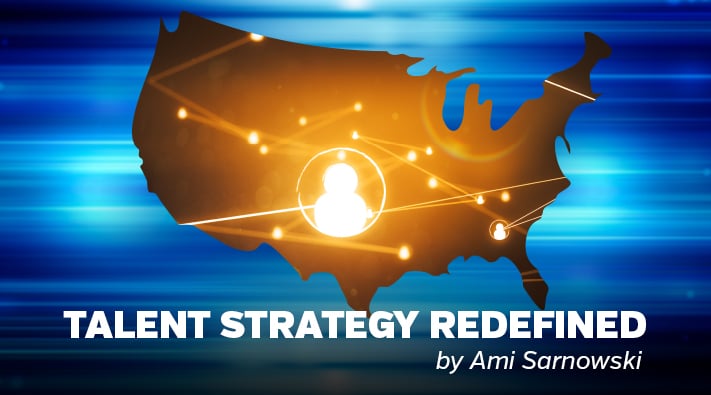Genesis10 has been tracking and reporting on talent shortages and risk since 2009. The technology talent market continues to evolve whether it is because of a company’s location strategy, adoption of emerging technologies or a shift in workforce competency requirements. Market factors such as immigration reform or where work can be performed due to regulatory conditions continue to keep workforce strategists and HR on their toes. And, of course, significant hiring upticks from new market entrants such as Amazon or Google will put companies on the defensive, shifting attention to retention and training.

The skills gap continues to widen, with nearly 60% of employers struggling to fill job vacancies within 12 weeks, according to LinkedIn which predicts that the talent gap will grow to 85.2 million by 2030. At the same time, we watch Gen Z enter the workforce. The demographic is 63 million strong and tech-savvy yet operates differently and is expected to comprise 36% of the workforce in 2020. Corporate recruiters will need to adopt a different approach and message to attract and entice Gen Z candidates that they used with Millennials or earlier generations. Gen Z candidates are focused on brand, social mission and responsibility, cultural fit, social media reviews and the day-to-day experience. Not only will corporate recruiters have to adopt a different approach to attract, managers will need to adjust their management style to effectively support unique idiosyncrasies and facilitate building a highly collaborative team.
Redefining talent strategies and understanding digital workforce capabilities and skill gaps is critical to effectively support the business. Growth is a top priority for CEOs and top executives, but consistently they point to the lack of talent and capabilities as stifling growth. In addition to focusing on young talent joining the workforce, a similar focus has to be placed on working with existing employees to define new career paths. More and more HR professionals and employers are planning for rising retirements ages and discussing implications in terms of benefits, pensions, accommodations and so forth. Anticipate seeing new career paths, an increase in training initiatives to upskill or reskill in order to support existing top-caliber talent as well as opportunities for professional growth not just through traditional promotions but also lateral moves.
Redefining talent strategies needs to include broadening the talent partner ecosystem and evaluating new sourcing channels to help address talent gaps. A recent Gartner Emerging Risks Survey reveals that the global talent shortage is now the top emerging risk facing organizations. The survey of 137 senior executives in 4Q18 shows that concerns about “talent shortages” now outweigh those around “accelerating privacy regulation” and “cloud computing,” which were the top two risks in 3Q18.
Three tactics to mitigate talent risk:
1. Location Strategy
Explore diversifying access to talent to increase capability and capacity. The ability to tap into another market to scale the workforce in a flexible manner in a secure environment is an attractive option to traditional staffing onsite or engaging expensive consulting for work efforts that can be outsourced in the U.S.
2. Training
- Upskilling/reskilling – Evolving a select workforce through training and professional development will be a key strategy to building workforce capabilities with valuable institutional knowledge.
- Communication and soft skills training – Tech savvy, Gen Z may need schooling in handling telephone calls, facilitating group discussion or responding to emails in addition to communication and soft skill training. As Gen Z communications revolve around text messages, videos and emoji, short YouTube videos may be an effective training mechanism.
3. Technology Roadmap
Gain insight on the strategic direction of the technology roadmap so forward-thinking plans can be developed.
Workforce Strategists and HR have their hands full as they tackle workforce constraints. Not only do strategists have to focus on identifying capability requirements, skills gaps, and developing tactics to close the skills gap without overpaying for talent, but they also have to be concerned with the brand image of the company and evolving the company brand purpose to connect with a workforce that is spanning multiple generations.
Continue the conversation on talent strategy! Subscribe to the Genesis10 blog.
Also read Ami's blog, No Surprise--Patch Management Deemed Critical Business Routine
















